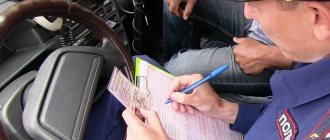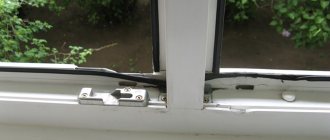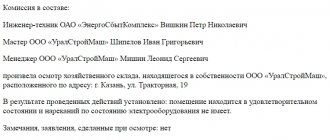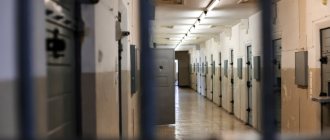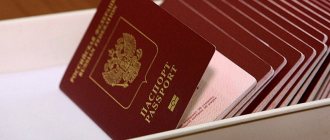New edition of Art. 180 Code of Criminal Procedure of the Russian Federation
1. Inspection and certification reports are drawn up in compliance with the requirements of this article, articles 166 and 167 of this Code.
2. The protocols describe all the actions of the investigator, as well as everything discovered during the inspection and (or) examination in the sequence in which the inspection and examination were carried out, and in the form in which what was discovered was observed at the time of the inspection and examination. The protocols list and describe all items seized during inspection and (or) examination.
3. The protocols must also indicate at what time, in what weather and what lighting the inspection or examination was carried out, what technical means were used and what results were obtained, what objects were seized and sealed and with what seal, where after the inspection the corpse or objects were sent relevant to the criminal case.
The uncertainty of the concept of “scene of incident” as a reason for the substitution of investigative actions
The absence in the criminal procedural legislation of a clear concept of “scene of the incident” allows the preliminary investigation authorities, under the guise of inspecting the scene of the incident, to conduct inspections of premises, terrain, vehicles that have nothing to do with the scene of the incident; in addition, under the guise of inspecting the scene of the incident, investigators quite often conduct personal search and search, replacing investigative actions.
As a result of such “inspections,” the constitutional rights of citizens are violated, and legal uncertainty in this matter is interpreted by judicial practice in favor of the prosecution.
In the course of writing this article, more than a hundred criminal cases and materials from pre-investigation checks were studied on which the crime scene was inspected before criminal cases were initiated.
In criminal cases of bribery, investigators, before initiating a criminal case at the place of detention of the bribe-taker, conducted an inspection of the scene of the incident during which they confiscated funds from the detained person, actually conducting a personal search, thereby violating his right to freedom and personal integrity (Article 22 of the Constitution of the Russian Federation).
In criminal cases involving the sale of narcotic drugs, investigators, before initiating a criminal case at the place of arrest, under the guise of inspecting the scene of the incident, searched the detained persons and confiscated their mobile phones, money, and conducted searches of vehicles, thereby violating the right to privacy, personal and family secrets , the right to privacy of correspondence, telephone conversations, postal, telegraph and other messages (Article 23 of the Constitution).
In criminal cases of fraud in the field of shared construction, when the subject of the theft was non-cash funds, and the place where the crime ended was the place where funds were withdrawn from the victim’s bank account, investigators carried out, under the guise of inspecting the scene of the incident, inspections of company offices and construction sites that had nothing to do with do not have the scene of the incident. Quite often, under the guise of inspecting the crime scene, inspections were carried out at the offices of the developer's counterparties. A study of the crime scene inspection protocols shows that the “inspections of the crime scene” were carried out for good reason. At the time of the “inspection of the crime scene,” investigators had no reason to believe that in the inspected premises there were objects and documents relevant to the criminal case.
In all of these cases, including when objects and documents were confiscated, the detainees were not given copies of the crime scene inspection report; moreover, according to several materials from pre-investigation checks, if a car identification number was suspected of being falsified, during the crime scene inspection the car was seized, a copy of the report was made was not delivered to the owner.
The current criminal procedure law provides for six types of inspection: inspection of the scene of the incident , area, home, other premises, objects and documents, inspection of the corpse.
According to Article Art. 144 of the Code of Criminal Procedure of the Russian Federation, before initiating a criminal case, only an inspection of the scene of the incident, documents, objects, and corpses is allowed.
Based on the literal interpretation of Art. 144 and art. 176 of the Code of Criminal Procedure of the Russian Federation, inspection of the area, home, or other premises (if they are not the scene of the incident) before initiating a criminal case is not allowed.
An inspection of the scene of the incident is carried out in order to detect traces of the crime and clarify other circumstances relevant to the case.
Other grounds for conducting an inspection, for example, such as for conducting a search (the presence of sufficient data to believe that in any place or in the possession of any person there may be tools, equipment or other means of committing a crime, objects, documents and valuables that may have significance for a criminal case) is not specified in the law, which allows the investigator to arbitrarily inspect any places without justifying his decision in the resolution.
I believe that the concept of “scene of incident” is identical to the concept of “crime scene”; the difference is that at the time of the pre-investigation check it is not known whether the event in question is a crime or not.
Following this logic, we can refer to Article 152 of the Code of Criminal Procedure of the Russian Federation, from which it follows that the preliminary investigation is carried out at the place where the act containing signs of a crime was committed. If a crime was started in one place and ended in another, then the criminal case is investigated at the place where the crime ended.
Consequently, the crime scene is the place where the unlawful act was committed and (or) the place where socially dangerous consequences occurred.
Based on the foregoing, we can conclude that the place of the incident is the place of the alleged unlawful act (action or inaction) and (or) the place where the expected socially dangerous consequences occurred.
This issue has been repeatedly considered by the Constitutional Court of the Russian Federation, which believes that the issue of substitution of investigative actions does not fall within its competence.
In case No. 1258-О-О dated October 13, 2009, the applicant held the position of investigator of the Main Investigation Department. As part of the verification of the application for extortion of a bribe, carried out in accordance with Article 144 of the Code of Criminal Procedure of the Russian Federation, employees of the internal security department inspected the scene of the incident, during which items and documents that were in his clothes were confiscated from the applicant, which were subsequently added to the case as material evidence.
In case No. 3205-O dated November 28, 2019, the applicant argued that the uncertainty of Art. 176 of the Code of Criminal Procedure of the Russian Federation (grounds for conducting an inspection of the scene of an incident), allowed the investigator, as part of the inspection of a seized mobile phone, laptop, to remove and examine information from it without obtaining an appropriate court decision, thereby violating the right to secrecy of correspondence and privacy.
In these cases, the Constitutional Court of the Russian Federation refused to accept complaints for consideration, indicating that the applicants were actually challenging not the norms themselves, but the validity and legality of their application in his criminal case.
In order to eliminate the substitution of investigative actions and uncertainty in Article 176 of the Code of Criminal Procedure of the Russian Federation, I propose to exclude from the Criminal Procedure Code of the Russian Federation the investigative action “inspection of the scene of the incident” (Articles 176-178 of the Code of Criminal Procedure of the Russian Federation) and replace it with a search.
Amend Art. 182 of the Code of Criminal Procedure of the Russian Federation, adding the following wording to part one: “the search is carried out in order to detect traces of a crime, clarify other circumstances relevant to the criminal case, the search (seizure) can be carried out before the initiation of a criminal case.” The rules for examining and exhuming a corpse apply to the search.
Legislative replacement of the investigative action of inspecting the scene of an incident with investigative actions such as search, personal search, seizure, firstly, will ensure strict observance of the constitutional rights of citizens involved in criminal proceedings, and secondly, will improve the quality of the initial investigative actions carried out at the scene of the incident, will allow the preliminary investigation authorities to more efficiently search and seize traces of a crime.
Inspection
Inspection of the scene of the incident
The place of the incident is understood as the place where a crime was committed (reliably known or suspected) or another event of interest to the investigation (for example, the place where the stolen property was hidden or the place where the corpse was found if it was delivered there after the murder).
Usually the most important evidence, traces of a crime that give the investigator the initial clues to establishing the picture of the crime, are discovered precisely during this investigative action. The success of the investigation largely depends on a high-quality and timely inspection of the crime scene. In this regard, it is an urgent investigative action and, in urgent cases, can be carried out before the initiation of a criminal case (Article 176 of the Code of Criminal Procedure). Typically, there are two stages in the inspection of an accident scene: static and dynamic. At the first stage, the situation is examined in its unchanged form, in the same form in which the investigator found it. On the second, it is allowed to change it, move its individual elements and objects for the purpose of studying them in detail. However, in any case, during the inspection, the situation as seen by the investigator and his other participants should be recorded. If it was violated before the inspection began (for example, the colliding vehicles were removed from the roadway), the investigator must record what actually remained at the scene of the incident.
When inspecting the scene of an incident, the presence of witnesses is required, except in cases provided for in Part 3 of Art. 170 Code of Criminal Procedure. The investigator also has the right to involve the accused, suspect, victim, and witness in the examination. If the inspection is carried out with the participation of the accused or suspect, then their defense attorney has the right to take part in it. If necessary, a translator is invited. The investigator may also involve a specialist in the examination, who provides him with various scientific and technical assistance. These persons are present during all actions of the investigator and can draw his attention to certain circumstances and make statements to be entered into the protocol.
When inspecting the scene of an incident, various scientific and technical means can be used to facilitate the search and detection of all kinds of traces and evidence (especially invisible and low-visibility), as well as technical means of recording the situation and detected traces - photography, filming, audio and video recording, making casts and impressions .
Plans and diagrams of the scene of the incident or its individual fragments may also be drawn up.
A protocol on the inspection is drawn up in compliance with the general rules provided for in Art. 165, 166 and 180 Code of Criminal Procedure. It records the situation at the scene of the incident, what was discovered and seized. The seized items must be described in detail, indicating their individual characteristics and characteristics, and, if possible, packaged and sealed. The protocol must indicate what scientific and technical means were used during the inspection and what the result of their use was (what was discovered or produced). Photographic negatives and photographs, films, transparencies, plans, diagrams, casts and prints of traces, etc. made during the inspection are attached to the protocol.
Everything discovered and seized during the inspection must be presented to witnesses and other participants in the inspection. Only those items that may be relevant to the criminal case are subject to seizure.
Inspection of the area, home, other premises
As an independent type of inspection, it is relatively rare and is carried out in cases where the inspected territory is obviously not the scene of a crime or other event under investigation (for example, when checking the alibi of the accused, it is determined whether the actual situation at his place of stay coincides with that described by him). Such an inspection is carried out according to the same rules as an inspection of the crime scene, with the exception of the following features:
- inspection of the home is carried out only with the consent of the persons living in it or on the basis of a court decision received in the manner established by Art. 165 Code of Criminal Procedure;
- an inspection of the organization’s premises is carried out in the presence of a representative of the administration of this organization; if it is impossible to ensure his participation in the inspection, a record of this is made in the protocol.
Examination of the corpse
Most often it is carried out during an inspection of the crime scene. Even if the place where the corpse was found does not coincide with the place of the murder (it was taken there after the murder), this place is always of interest to the investigation and therefore is subject to inspection. As a separate investigative action, examination of a corpse is rarely performed (usually in a morgue), for example, when there is a need to re-examine it.
When examining a corpse, its location, posture, visible injuries, and clothing are recorded. Clothing (in particular, the contents of pockets) of unidentified corpses should be described in especially detail, since this can be of great importance for establishing the identity of the deceased.
The peculiarity of this type of examination (regardless of whether it is carried out independently or during an inspection of the crime scene) is that it must be carried out with the participation of a forensic expert, and if his participation is impossible, a doctor (Article 178 of the Code of Criminal Procedure). The rest of its rules are the same as for other types of inspection.
Inspection of objects and documents
There are two options for such an inspection. It can be carried out during the investigative action during which these objects or documents were seized (for example, during a search, inspection of the crime scene, etc.) In such cases, a separate document is not drawn up; the results of the inspection are recorded in the protocol of this investigative action. In another option, the seized documents are described only in the most general terms, packaged, sealed, and then a more detailed inspection is carried out, documented in a separate protocol. The investigator decides which option to choose depending on the specific situation. For example, if an inspection of the crime scene is carried out in unfavorable meteorological conditions, in a desert area, at night, etc., then it is advisable to examine the items seized in detail later, in the investigator’s office.
During the inspection of objects and documents, in addition to witnesses, the same persons may be present as during the inspection of the scene of the incident. Various scientific and technical means can also be used. The inspection protocol is drawn up according to the same rules.
Inspection (concept, types, grounds, procedural order, procedural design).
The rules governing the inspection are provided for: Art. 25 of the Constitution of the Russian Federation, Part 1, Art. 12, art. 164-170, 176-178, 180, 284, 287 Code of Criminal Procedure.
Inspection is an investigative action consisting of a direct examination using the visual organs, as well as other sensory organs, of the relevant objects in order to clarify the circumstances relevant to the case.
Based on the objects of inspection named in the law, its types are determined: inspection of the scene of the incident, area, etc. Article 178 of the Code of Criminal Procedure provides for inspection of the corpse. From among the documents, postal and telegraph correspondence can be distinguished as an independent object (Article 185 of the Code of Criminal Procedure). The law says nothing about the inspection of vehicles, as well as animals, although there is a need for this and such inspections are permissible. In general, the list of objects to be inspected should not be considered exhaustive. Direct examination (inspection) of living persons, taking into account the “specifics” of the object, is an independent investigative action - examination .
The law contains a general indication of the purpose of the inspection. This is the detection of traces of a crime and the clarification of other circumstances significant to the case. Examples of “other purposes” can be: identifying the situation of an incident or the situation of another object, including the living conditions and upbringing of a minor, obtaining samples for comparative research (soil, seal impressions), detecting crime weapons in open areas of the area. The multiplicity of goals allows us to consider the inspection as a universal investigative action. The concept of traces of a crime cannot be interpreted broadly to mean objects and documents, since their discovery is the purpose of the search. The discovery of objects and documents through inspection is permissible, provided that this investigative action is simultaneously set with another goal - to clarify the situation.
The basis for conducting an inspection of an area, home or other premises is the availability of information (factual data) about a crime committed there or a change in the situation associated with it, as well as about the significance of the situation on the area or in the premises to establish circumstances relevant to the case.
The basis for examining objects and documents is the presence of signs of material evidence. The total body of information assessed as sufficient for making a decision to conduct an inspection, along with evidence, may include the results of operational search activities, including (depending on the object of inspection) secret ones. In addition to the grounds, an inspection of a home presupposes the consent of the persons living in it (Part 1 of Article 12 of the Code of Criminal Procedure). The concept of housing is given by the legislator in paragraph 10 of Art. 5 Code of Criminal Procedure.
If there are grounds for an inspection, the investigator directly carries out this action, and if it is necessary to inspect the home against the will of the persons living in it, he applies for the appropriate permission from the court (Part 1 of Article 12 of the Code of Criminal Procedure). The decision to conduct an inspection does not require the issuance of a ruling, except in cases of inspection of a home against the will of the persons living in it. The legality (reasonableness) of an inspection of a home carried out without obtaining a court decision is determined in accordance with the procedure of judicial control (Part 5 of Article 165 of the Code of Criminal Procedure) based on the existence of grounds for entering the home at the time the investigator made a decision on this.
In accordance with Part 2 of Art. 176 of the Code of Criminal Procedure, in urgent cases, an inspection of the scene of the incident may be carried out before the initiation of a criminal case.
An inspection of the scene of an incident before the initiation of a criminal case as its implementation in order to verify a report of a crime before a decision is made to initiate a case.
Urgent cases are determined by the degree of danger of losing traces of a crime under the influence of certain persons or natural phenomena (for example, precipitation) and the inability to ensure their safety in an unchanged form by limiting access to the scene of citizens, animals, and technical means. The urgency of examining the crime scene may be caused by the need to immediately obtain information to identify the person who committed the crime. The location of the incident is not limited only to the setting of the commission of the criminal act; it can be recognized as the place where the stolen property was hidden, where the corpse was found, where the instruments of the crime were found, etc.
The inspection procedure is provided for in Art. 177 Code of Criminal Procedure. During the inspection, as a general requirement, witnesses are present. Their participation is determined by the general purpose of the institution of witnesses in criminal proceedings: the need to certify the fact of an investigative action, its progress and results. An exception to the rule on the participation of witnesses during an inspection is in cases of forced refusal of their invitation caused by two extreme circumstances named in the law (difficult accessibility of the area, in the absence of proper means of communication, as well as danger to the life and health of people). The absence of witnesses, as a rule, should be compensated by detailed recording of the progress and results of the inspection using technical means.
In order to create a holistic picture of the scene of the incident, premises or home in the interrelation of all the details of their situation, it is prescribed that the inspection of traces of the crime and discovered objects should be carried out at the place of investigative action, except in cases where: a) a comprehensive inspection requires a long time; b) on-site inspection is difficult.
Items not examined at the place of investigative action are subject to inspection as part of an independent investigative action, drawn up in a separate protocol. To ensure the safety of items unchanged, the law categorically obliges them to be packaged in accordance with the rules of forensic technology. Packed items are subject to seizure, which is noted in the protocol with a brief description of both the seized items (to the extent necessary for identification) and the packaging itself. Subsequent inspection of the items must be accompanied by a description in the protocol of the external features of the packaging, including seals and signatures.
An inspection as an investigative action involves the seizure of not only traces of a crime in the narrow sense of the word (traces of hands, shoes), but also any other material objects related to the case.
The inspection must be organized in such a way that witnesses are present when traces of a crime and other objects significant to the case are discovered, and directly observe the situation being examined. Everything discovered and seized during the inspection must be presented to witnesses and other participants in the investigative action.
The consent of the persons living in the dwelling to carry out an inspection therein is requested in all cases, regardless of the purposes of the investigative action, including in the presence of clear signs of a crime committed in it. Persons living in a dwelling as its owners, main tenants, and adults registered in it (permanently or temporarily).
The procedure for obtaining a court decision to inspect a home in the absence of the consent of the persons living in it, as well as entering it in exceptional cases by order of the investigator, is provided for in Art. 12, part 2 art. 164, art. 165 Code of Criminal Procedure.
When entering a home, the investigator is obliged to announce to those present what investigative action will be carried out and its purpose. If the inspection is carried out on the basis of a court decision or by order of the investigator, they are announced to the owner or other person living in the dwelling against signature. The law does not prohibit inspection of a home in the absence of the persons living there. At the same time, it also does not contain a requirement to invite strangers, except for witnesses, citizens.
The presence of grounds for inspecting the scene of an incident in a home allows for forced entry into it, including with the use of physical force and opening locked doors. In such cases, it is advisable to invite representatives of the housing maintenance organization. Opening other storage facilities in the inspected dwelling as part of the inspection procedure is not permitted.
The investigator’s decision to inspect the organization’s premises is binding on the administration or its representative. The inspection is carried out, as a rule, in their presence, otherwise a note is made in the protocol.
to the examination of the corpse . It requires an examination of the corpse at the place of its discovery with the participation of a forensic expert or a doctor. If necessary, an examination of the corpse can be carried out before initiating a criminal case.
A number of rules for conducting investigative actions set out in Art. 164-170 Code of Criminal Procedure.
Based on the results of the inspection, a protocol is drawn up, which describes all the actions of the investigator, as well as everything discovered during the inspection in the sequence in which the inspection was carried out, and in the form in which what was discovered was observed at the time of the inspection (Part 2 of Article 180 of the Code of Criminal Procedure). When drawing up protocols, it is unacceptable to speculate on the situation and draw conclusions. For example, when stealing from a store, it cannot be written down in the protocol that such and such stolen items were previously on the counter. It is necessary to display those characteristic features and circumstances that existed at the time of the inspection of the object, which will allow all subsequent subjects of proof to independently conclude that the allegedly stolen items or products were actually located at this place. Information provided by the participants in the inspection and which is in the nature of testimony on the merits of the case is not reflected in the protocols. At the same time, statements of these persons on procedural issues, as well as comments regarding the completeness of the records, are recorded in the protocol.
The protocol should reflect the elementary experimental actions performed by the investigator (turning on electrical appliances, palpation of muscle tissue), and the results observed.
The law requires that all seized items be listed and described in the inspection report. The protocol, along with the main results of the inspection, reflects some related information about the progress of the investigative action. This:
a) conditions for carrying out the investigative action (time, weather, lighting);
b) characteristics of the technical means used and the results of their use;
c) a description of the packaging and seals on the seized items;
d) the place where the corpse and objects not stored for business are sent.
